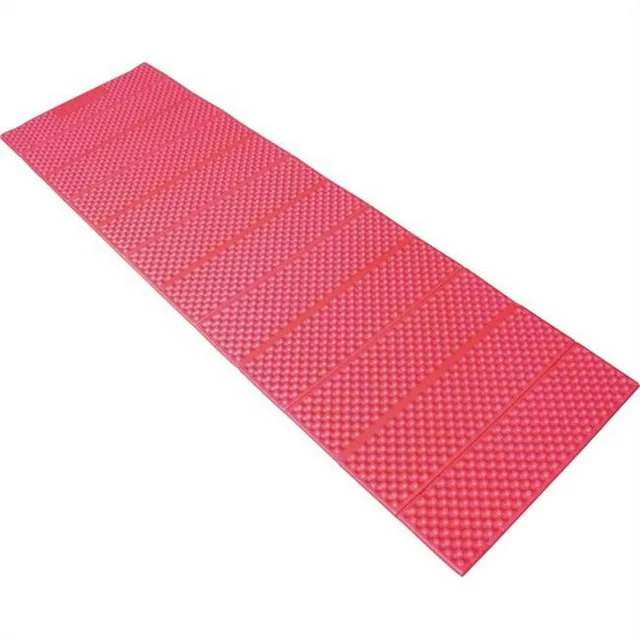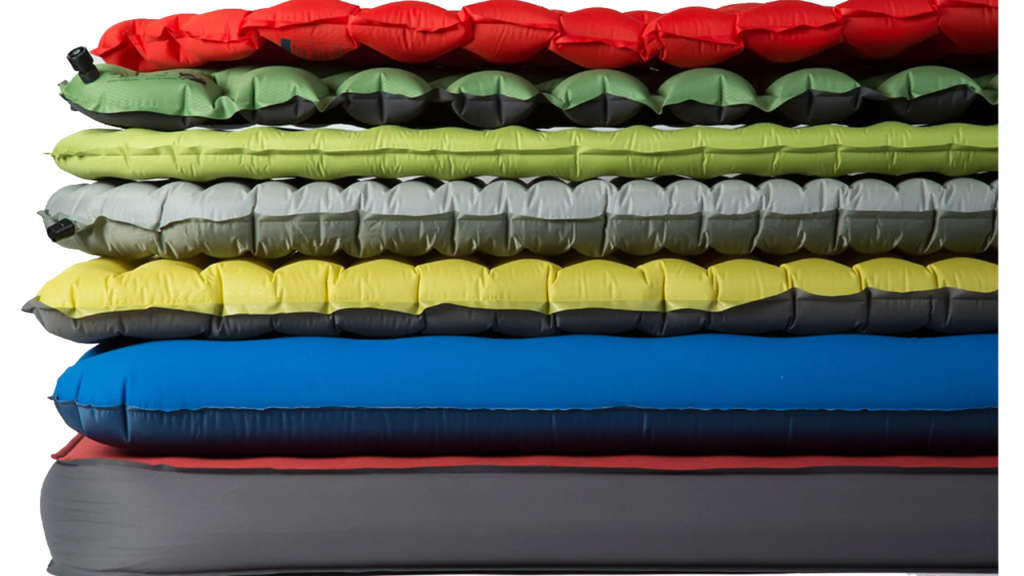Finding the ideal sleeping pad before hiking is essential for a restful night’s sleep in the outdoors. Consider the pad’s insulation, especially if you’re camping in colder conditions. Look for options with a high R-value, indicating better thermal resistance against the cold ground.
The pad’s size and weight are crucial factors for backpackers. Choose a compact and lightweight design that fits well into your backpack without adding unnecessary bulk. Additionally, pay attention to the pad’s inflation and deflation process – quick and efficient setups contribute to a hassle-free camping experience.
Comfort plays a significant role. Opt for a sleeping pad that provides adequate cushioning and support for a good night’s sleep. The material and design influence comfort, so consider factors like thickness, texture, and whether the pad is self-inflating or requires manual inflation.
Durability is key, especially if you plan on frequent backpacking trips. Look for sleeping pads made from durable materials that can withstand rough terrain and resist punctures.
Ultimately, finding the ideal sleeping pad involves a balance between insulation, size, weight, comfort, and durability. Tailor your choice to match your hiking style, climate conditions, and personal preferences to ensure a restorative and comfortable sleep under the stars.
Types of Backpacking Sleeping Pads
Finding the ideal sleeping pad before hiking is essential for a restful night’s sleep in the outdoors. Consider the pad’s insulation, especially if you’re camping in colder conditions. Look for options with a high R-value, indicating better thermal resistance against the cold ground.
The pad’s size and weight are crucial factors for backpackers. Choose a compact and lightweight design that fits well into your backpack without adding unnecessary bulk. Additionally, pay attention to the pad’s inflation and deflation process – quick and efficient setups contribute to a hassle-free camping experience.
Comfort plays a significant role. Opt for a sleeping pad that provides adequate cushioning and support for a good night’s sleep. The material and design influence comfort, so consider factors like thickness, texture, and whether the pad is self-inflating or requires manual inflation.
Durability is key, especially if you plan on frequent backpacking trips. Look for sleeping pads made from durable materials that can withstand rough terrain and resist punctures.
Ultimately, finding the ideal sleeping pad involves a balance between insulation, size, weight, comfort, and durability. Tailor your choice to match your hiking style, climate conditions, and personal preferences to ensure a restorative and comfortable sleep under the stars.

Closed-Foam Sleeping Pads
Closed-foam sleeping pads are a reliable and straightforward choice for hikers seeking simplicity and durability. Constructed from dense foam, these pads are known for their insulation properties, providing a barrier between your body and the cold ground.
One of the key advantages of closed-foam sleeping pads is their ability to retain heat, making them an excellent choice for cold weather camping. The closed-cell structure prevents air circulation, effectively trapping warmth and providing insulation even in chilly conditions.
These pads are also highly durable and resistant to punctures, making them suitable for rugged terrains. Their solid, non-inflatable design eliminates the risk of leaks or malfunctions, offering a hassle-free and dependable sleep system on the trail.
Closed-foam sleeping pads are typically lightweight and compact, ensuring easy integration into your backpack without adding unnecessary bulk. While they may lack the plush comfort of inflatable options, their reliability, insulation, and durability make them a popular choice for hikers prioritizing simplicity and functionality on their outdoor adventures.
SELF-INFLATING SLEEPING PADS
Self-inflating sleeping pads offer a convenient blend of comfort and efficiency for hikers preparing for a night under the stars. These pads feature an ingenious design that combines open-cell foam with an airtight outer shell. When you open the valve, the foam expands and draws in air, allowing the pad to inflate on its own to a certain extent.
While self-inflating, these pads usually require a few extra breaths to reach optimal firmness and customization to personal preference. This versatility in firmness makes them popular among hikers who appreciate the ability to adjust the pad to their desired comfort level.
One of the notable advantages of self-inflating pads is their excellent balance between cushioning and packability. They provide a comfortable sleeping surface while still being relatively lightweight and easy to compress for storage in your backpack.
Ideal for various terrains, self-inflating sleeping pads are a reliable choice for those seeking a hassle-free setup without compromising on comfort. Their versatility and efficiency make them a popular option for backpackers looking for a comfortable night’s sleep on the trail.

AIR-FILLED BACKPACKING SLEEPING BAGS
Air-filled sleeping pads, also known as inflatable pads, offer a lightweight and packable solution for hikers prioritizing comfort without sacrificing space in their backpacks. These pads are typically made of durable, lightweight materials that can be easily inflated to your preferred firmness.
The key advantage of air-filled sleeping pads lies in their plush and cushioned feel, providing a more luxurious sleeping surface compared to other types of pads. The ability to adjust the firmness by controlling the amount of air allows for a personalized sleeping experience, catering to individual preferences.
Despite their comfort, it’s important to note that air-filled pads may require manual inflation, usually through an integrated or external pump. This process, while straightforward, adds a few extra minutes to your setup time.
While they may not offer the same insulation as closed-foam pads, many air-filled sleeping pads come with additional features like reflective materials or internal structures that enhance warmth, making them suitable for a range of climates.
Air-filled sleeping pads are favored by hikers who prioritize a balance between comfort and packability. Their inflatable nature makes them easy to transport, and advancements in design and materials contribute to their popularity among those seeking a good night’s sleep on the trail.

Conclusion
A comfortable sleeping pad is one of the most important pieces of equipment on any hiking trip. As previously highlighted in our post concerning sleeping bag types, having a good sleeping pad is just as important as having a good sleeping bag. As you move on to the next hike, choosing a heavier softer sleeping pad can easily compensate for the extra weight that comes from sleeping. Adjusting everything in your backpack and getting a good night’s sleep can change your mood for your next adventure. I would recommend visiting Klymit as a jumping off place with your research of sleeping pads.
DISCLOSURE: THIS POST MAY CONTAIN AFFILIATE LINKS, MEANING, I GET A COMMISSION IF YOU DECIDE TO MAKE A PURCHASE THROUGH MY LINKS AT NO COST TO YOU. PLEASE READ MY AFFILIATE DISCLOSURE FOR MORE INFORMATION.
REVIEW OF 5 BEST SLEEPING PADS
THN Outdoors
Premium Self Inflating Sleeping Pad
One of the higher quality self-inflating sleeping pads available for purchase. This product is sure to impress
PROS
Weighs only 1 pound, with 1.5″ thick padding. Material is water resistant for comfortable sleeping on all surfaces. Self-inflating with pneumatic valve.
CONS
Not the most comfortable option for users who don’t sleep on their backs.
Price
$42.99
Outdoorsman Lab
A renowned model recognized for its inflatable build, compact design, and cheaper cost.
PROS
Weighs 16 ounces for extremely light load. Only takes a few breaths to inflate. Pad is 2″ thick with weatherproof design. Comes with stuff sack.
CONS
Not the most durable option, as it tends to develop leaks without proper care.
Price
$99.99
Klymit
Static V Lightweight Sleeping Pad
Those looking for an incredibly lightweight inflatable sleeping pad should check out this popular model.
PROS
Overall, 18. 5 ounces of weight for lighter design. Constructed with a V-chamber design to keep air movement limited for heightened warmth. Comes with a patch kit.
CONS
Ground must be protected when using this product, in order to extend its life expectancy.
Price
$38.99
WELLAX
Ultralight Air Sleeping Pad
One of the lightest inflatable sleeping pads you can buy for those needing a lightweight option
PROS
One of the lightest options available, coming in at 14.5 ounces in weight. Offers a valve for inflating and a separate valve for quick deflating.
CONS
Many customers had issues with the product staying inflated.
Price
$29.72
Coleman
Sleeping Pad
This clever model from the reputable Coleman offers users a built-in pillow with a self-inflating design.
PROS
Self-inflating build. Comes with compression straps for quickly deflating pad. Included pillow is built-in to prevent pillow from sliding. Pad is around 2″ thick.
CONS
Pad could use some extra breaths after self-inflation. Smells of plastic.
Price
$29.971

Pingback: SLEEPING BAGS - Hiking Equipped